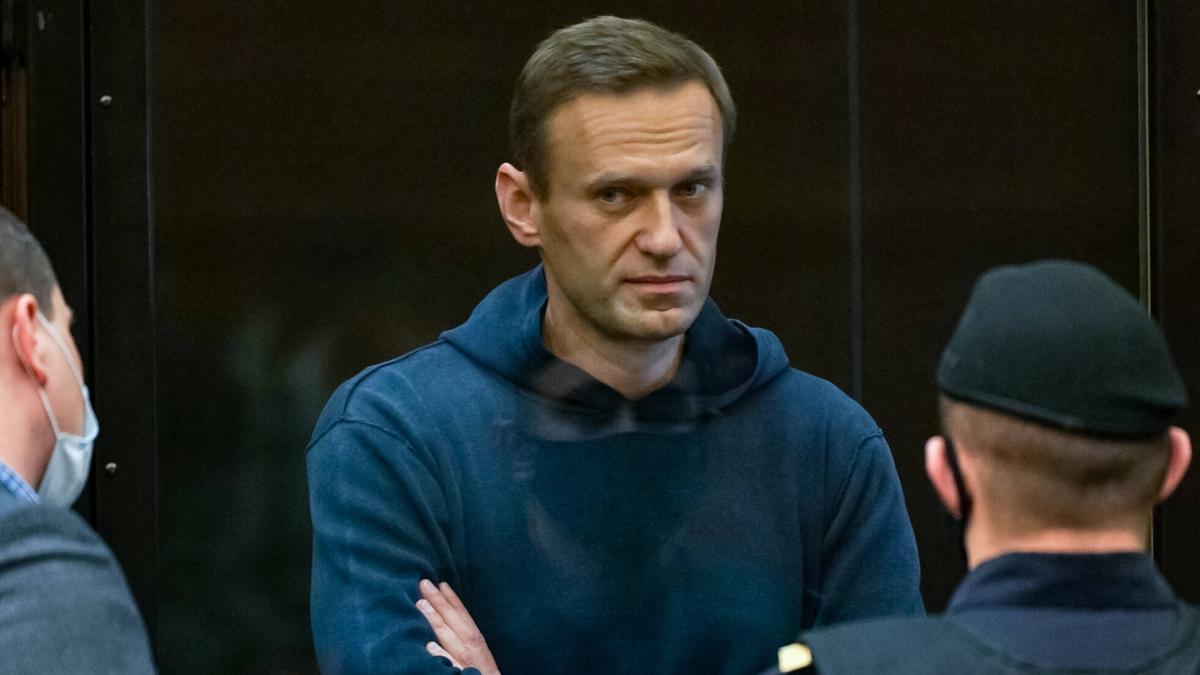Europe is rapidly dividing itself into a camp that is decommissioning and investing in nuclear power. The big question now is what will happen to the price of electricity if a Europe that needs a lot of electricity disconnects from nuclear power.
Huy / Brussels
MariannE LIBERT’N the terrace can be said to be a vantage point for one of the biggest problems of the Belgian government.
Lower in the valley flows the river Meuse, and on the opposite bank the landscape is dominated by a huge fenced industrial area. There are two nuclear power plants in Belgium, and here is one of them, the Tihange power plant, which grinds electricity with three nuclear reactors.
The view is impressive, as the Tihange power plant typically has three giant cooling towers in Central Europe, one for each nuclear reactor. White water vapor pushes from them like a flat statue.
There are two nuclear power plants in Belgium and one of them, the Tihange power plant, grinds electricity with three nuclear reactors. The Tihange nuclear power plant is located on the banks of the river Meuse.
In Finland, the principle is that nuclear power plants should be located in a relatively sparsely populated area. For example, there should be no shops, schools or hospitals within a five kilometer radius of the power plant.
Densely populated Belgium cannot afford such luxury. The nuclear power plant has not expelled residents from its neighbor, on the contrary: plots have just been sold for two new detached houses next to Libert’s house.
And get used to everything. According to Libert, now in the winter there is no sitting on the terrace, so the power plants do not disturb him at all. In summer, the leaves of the trees obscure the view.
Aircraft landing at the nearby Liège airport are more annoying than Libert. According to him, they often bevel right off the top of a nuclear power plant.
“They approach so low that you can see from the plane what we’re eating on the terrace,” he jokes.
Opposite the power plant is a road that has not been commissioned. One of the locals told HS that it had been planned as one way out if evacuations had to be made because of the power plant.
Libert’n the landscape is changing as the Belgian government plans to shut down both of the country’s nuclear power plants by 2025. In addition to Tihange in the municipality of Huy, four reactors are being shut down in Doel, Belgium’s second nuclear power plant.
This was already agreed in 2003, but it was not until this autumn that the government finally squeezed into deciding that this was now the case.
“It’s downright stupid,” Libert says. “If the power plants are shut down, then where do we get the electricity?”
Libert sums up the current headache of the Belgian government: the nuclear power plants are due to close, but the government was forced to leave a reservation to the December decision.
In Belgium, about 40% of electricity is generated by nuclear power. The share is the largest in the EU – in Finland before the introduction of Olkiluoto 3, the share is about a third, in France, the largest nuclear power country, more than 70 per cent.
The decommissioning of nuclear power will leave a large gap in Belgium, which was to be replaced in the next few years by, among other things, offshore wind power and two large natural gas-fired power stations. The plan faltered when one of the gas-fired power plants was not licensed.
If there is no certainty about alternative energy production before March this year, the two newest nuclear reactors may not be shut down. The government left open the option for one of the Tihangen and one of Doel’s reactors to continue.
The power plants are owned by the Franco-Belgian energy company Engie Electrabel, whose representative tells HS that such an alternative is not possible for the company. It has long been preparing for the closure of power plants, as the current law requires this to be done gradually from October 2022 until the end of 2025.
Power plants in Belgium are aging and even the newest reactors are beginning to reach the end of their life cycle without additional investment. If Tihang and Doel wanted to continue, even partially, it could not materialize until the winter of 2025.
WinstoN CHURCHILLIA The uranium pre – emptive countries’ attitude towards nuclear power has divided Europe into two camps.
In addition to Belgium, Germany will phase out its nuclear power plants by 2023, with Sweden even longer. Spain plans to shut down by 2035.
On the other side are countries that still see nuclear power as a viable option. Even if no new power plant projects are launched, there will be a need in many countries to extend the life of existing reactors.
The uranium curve has become more apparent as EU countries commit to reducing greenhouse gas emissions and embark on a transition to a fossil-free future.
Such a future requires a lot of electricity. The transition period from fossil to renewable energy, such as wind and solar power and hydrogen, is of most concern to policy makers. Is the transition going smoothly for Europeans, or can the electricity market be disrupted by prices?
In October, the energy ministers of ten EU countries announced co-writing, in which they highlighted nuclear power as one solution. Ministers call for nuclear energy to be taken into account as Europe reduces emissions and strengthens its energy self-sufficiency.
The majority of signatories came from Eastern Europe: Slovenia, the Czech Republic, Slovakia, Croatia, Bulgaria, Romania, Poland and Hungary. Finland and France, countries with a long history of nuclear power, are also the only countries where, in addition to Slovakia, more nuclear power is currently being built.
Professor of Engineering Physics at Aalto University Peter Lundin according to, the energy system in eastern europe has not been modernized, so securing nuclear power is an easier solution than making the leap to more modern, zero-emission forms of energy. Germany, which has renounced nuclear power, has now made this leap.
France’s tight ties to nuclear power are also explained by the fact that the country is a nuclear-weapon state.
“All nuclear-weapon states must have civilian production because the fuel chain of civilian production is strongly linked to the arms chain,” Lund says.
Nuclear power the letter was intended to be a lobby, as there is a strong debate in the EU over how to secure the investments required for the energy transition.
In the past, the EU has developed a taxonomy to help funders and investors identify which funding targets are ‘green’, environmentally sustainable – and more attractive to funders than non-green destinations.
At the end of December, the Commission did what the nuclear countries suffered in their letter: it also decided to classify nuclear power and natural gas as sustainable investments.
The Commission is facing countries opposed to EU nuclear power, which Austria has even threatened to take to the European Court of Justice over the Commission’s policy. The European Green Party (EGP) is considering the same.
In addition to Austria, the strongest opponents are Luxembourg, Denmark and Spain, who believe that equating nuclear power and fossil gas with wind and solar power will destroy the credibility of the EU’s sustainability rating. According to the countries, the final disposal of nuclear waste is a special problem of nuclear power.
Austria and Luxembourg do not have their own nuclear power plants, but they have a long history of opposition to nuclear power. In both countries, there are concerns about the safety of power plants near the country’s borders.
The same can be seen in Belgium: the Tihange power plant is close to the German border, and a giant demonstration against the power plant in 2017 particularly inspired those living on the German side. A total of 50,000 protesters formed a human chain from Tihang via Maastricht in the Netherlands to Aachen in Germany.
Nuclear power countries are right, at least, that if emissions reductions are to be achieved, nuclear power should not yet be run down.
The Belgian government is now decommissioning CO2-free electricity generation and replacing it, at least initially, by investing in fossil gas-fired power plants. At the same time, Belgium is increasing its dependence on natural gas imports.
Russia’s dependence will not necessarily increase, as Belgium will be able to import liquefied natural gas (LNG) through its ports.
Resistant to the nuclear power of spirit and blood Philippe Looze The Fin du Nucléaire NGO says Belgium has under-invested in renewable energy. It’s revenge now.
Opponent of nuclear power Philippe Looze lives in the nearby town of Liège.
According to Peter Lund, the natural gas phase may not be long. He estimates that natural gas in Belgium, like Germany, will be a “bridge fuel” before Europe can move on to the promise of hydrogen and synthetic fuels of the future.
“Now we have to see over the gas phase. Gas is not needed to give up nuclear power, but to get into hydrogen technology. ”
Right Next to the Tihange power plant is a shopping center with a parking lot André Derwael packs his car.
André Derwael sees no reason why nuclear power plants could not continue to operate. It is better for him not to have air pollution.
“Nuclear power is better than natural gas because there is no air pollution. Most people here would like to keep their power plants. ”
Derwael also has a theory that high-rise water vapor emissions from power plants keep storm clouds away from the river valley.
Come from Amay to shop in the neighborhood Nadine and Hubert do not want to be in the pictures and do not tell their last name because they turn out to be the opposite. An elderly couple has opposed the power plant because of safety concerns. Cracks were found in one of the reactor pressure vessels at the Tihang power plant in the 2010s, causing it to come to a standstill for nearly two years.
“We lived here before the power plant. First came one, now there are three. People think what can be done to them anymore. In Huy, everyone wants to keep the power plants, because they will make a lot of money for the municipality. ”
#Environment #Europes #demand #electricity #growing #exponentially #uranium #curtain #landed #continent #fear #price #electricity #skyrocket






